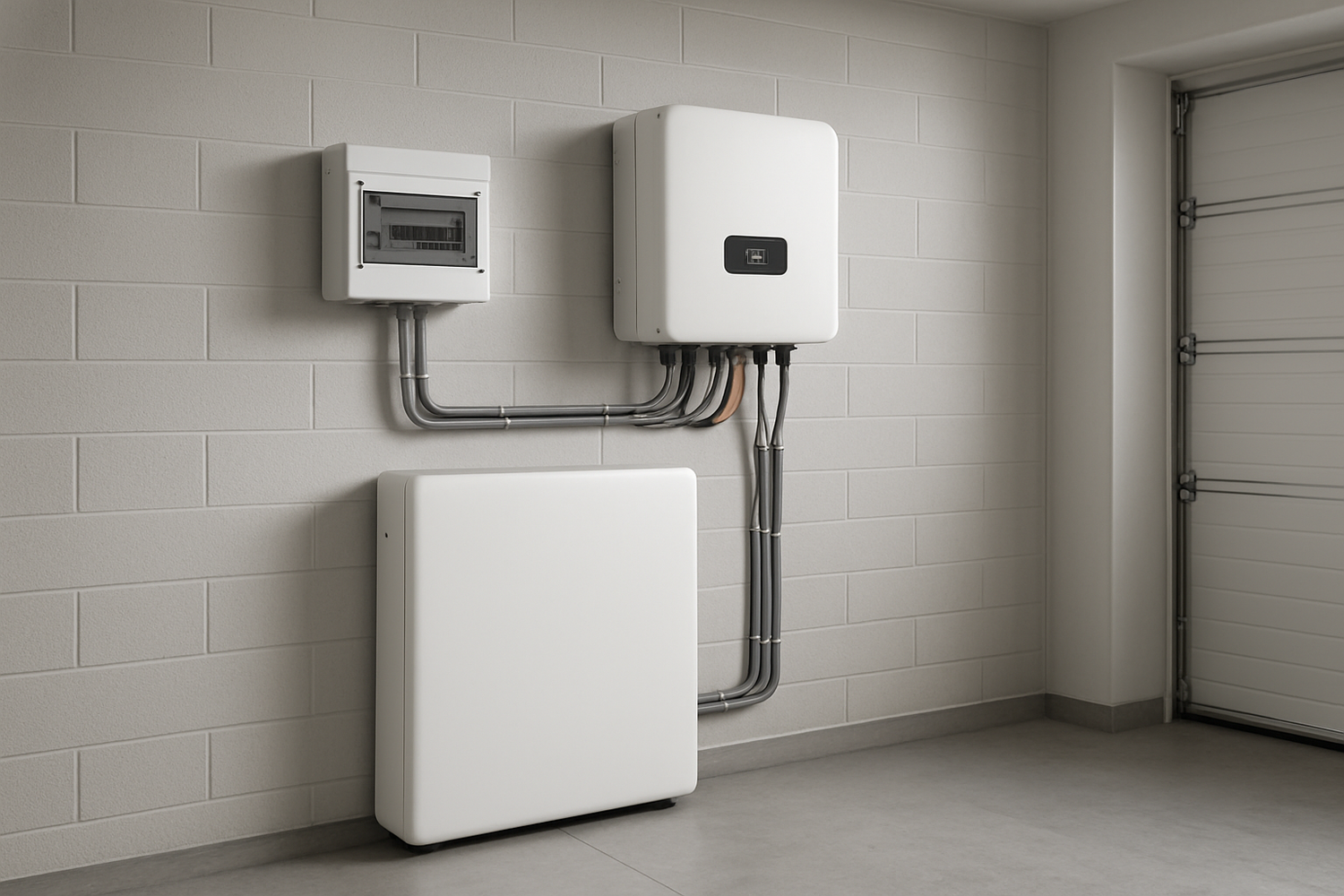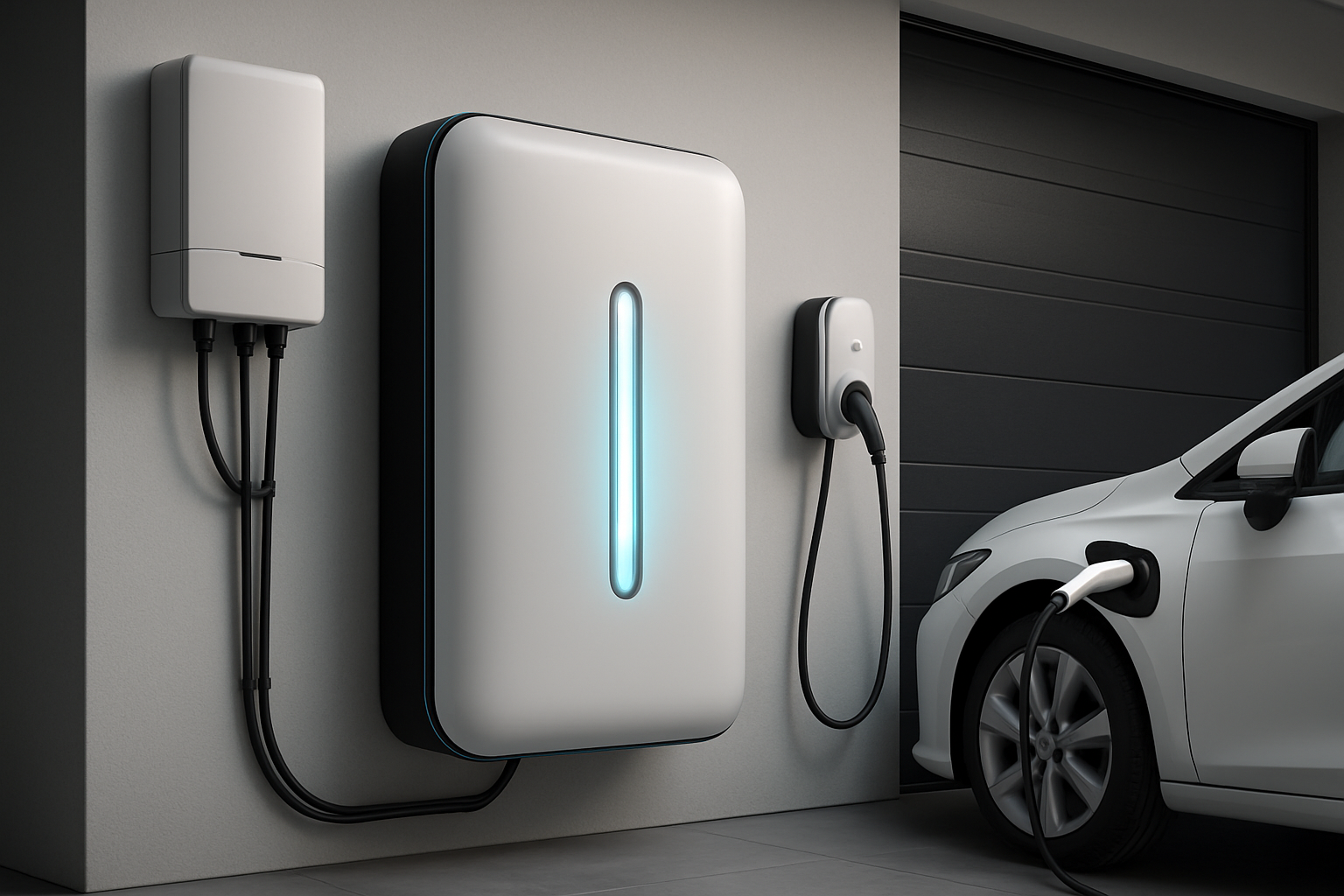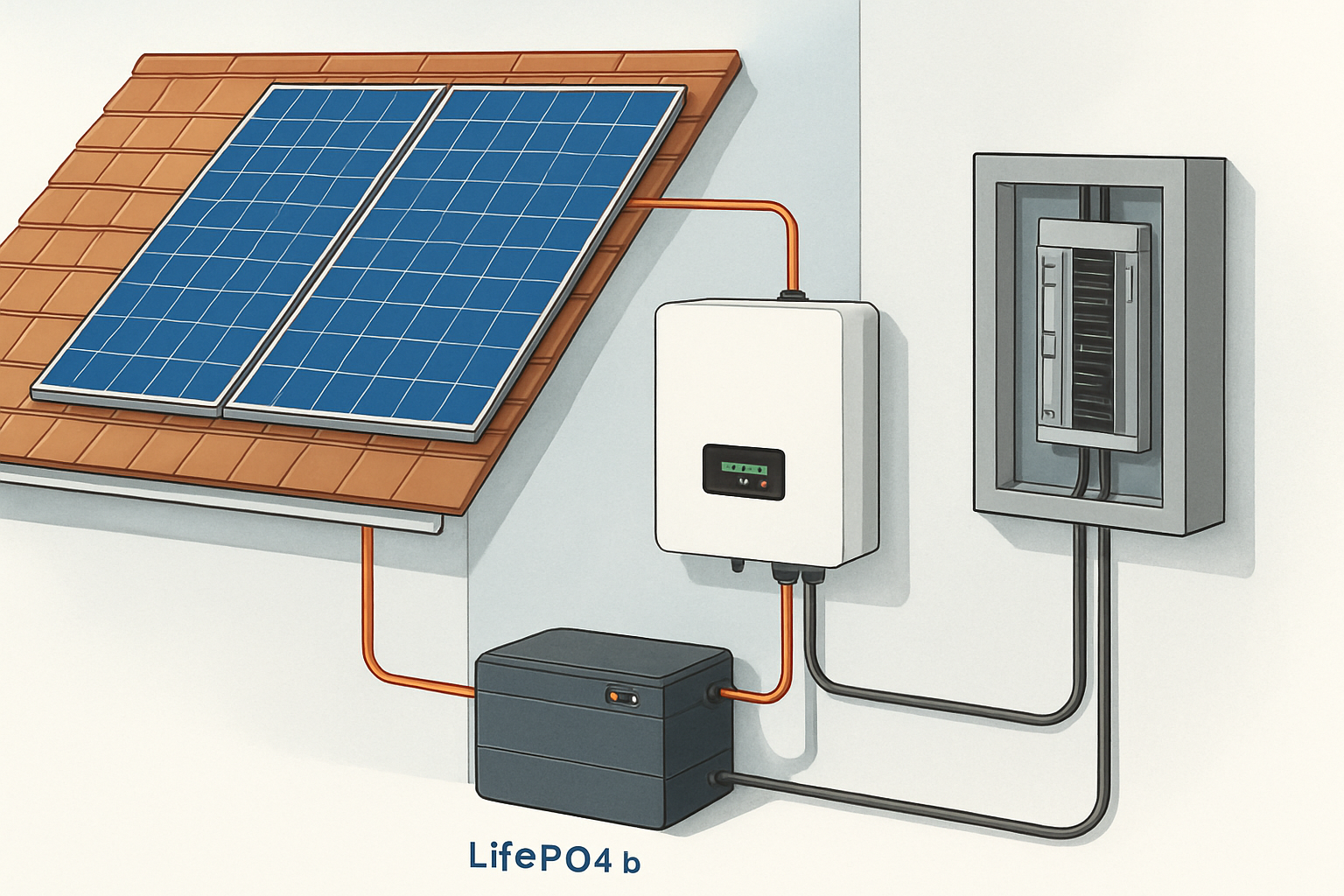Installing a home battery storage system is a major step toward achieving energy independence. When done correctly, it provides reliable backup power and can lower your utility bills. However, a successful outcome depends on avoiding several common but critical installation errors. These mistakes can compromise performance, reduce the system's lifespan, and even create safety hazards. Understanding these potential pitfalls is the first step to ensuring your investment is sound, safe, and effective for years to come.
Mistake 1: Incorrectly Sizing the Battery System
One of the most frequent residential battery setup errors is improper sizing. Both under-sizing and over-sizing create significant problems that undermine the value of your energy storage investment.
The Problem with Under-sizing
An undersized battery cannot meet your home's energy demands. During a power outage, you may find that it doesn't provide power for as long as you need or can't run essential appliances simultaneously. This also leads to frequent deep discharges, which can accelerate battery degradation and shorten its operational life.
The Drawback of Over-sizing
While it might seem safer to get a bigger battery than you need, over-sizing is an inefficient use of capital. A larger, more expensive battery that is never fully utilized means you've spent money on capacity you don't use. The goal is to match the storage size to your consumption patterns to maximize its daily value.
How to Achieve Correct Sizing
Proper sizing requires a careful analysis of your energy habits. Start by reviewing at least 12 months of utility bills to determine your average daily energy consumption in kilowatt-hours (kWh). Next, identify the critical loads—the essential appliances you need to power during an outage—and calculate their total power draw. A correctly sized system balances your daily energy needs, desired backup duration, and the output of your solar array.
Mistake 2: Overlooking Battery Chemistry and Key Specifications
Not all batteries are created equal. The chemistry and technical specifications of your battery are foundational to its safety, performance, and longevity. Choosing the wrong type is a mistake that can have long-term consequences.
Choosing the Right Chemistry: The LiFePO4 Advantage
For residential applications, Lithium Iron Phosphate (LiFePO4) batteries are widely regarded as a superior choice due to their inherent safety and stability. The iron-phosphate bond in LiFePO4 chemistry is structurally stronger than the cobalt-oxide bonds found in other lithium-ion variants. This makes them far less prone to thermal runaway, even if overcharged or physically damaged. LiFePO4 cells are incombustible and can operate safely across a wider range of temperatures, making them a more robust option for a home environment.
Understanding Critical Performance Metrics
Beyond chemistry, you must consider key performance indicators. Metrics like Depth of Discharge (DoD), round-trip efficiency, and C-rate define how the battery will perform. For a deeper dive into these metrics, the ultimate reference on solar storage performance provides detailed explanations. A higher DoD allows you to use more of the battery's stored energy, while higher round-trip efficiency means less energy is lost during charging and discharging cycles.
The Role of the Battery Management System (BMS)
A quality home battery storage system always includes a sophisticated Battery Management System (BMS). The BMS is the brain of the battery, responsible for monitoring cell voltage, current, and temperature. It protects the battery from overcharging, over-discharging, and overheating, ensuring both safety and a long service life. A system without an advanced BMS is vulnerable to premature failure and safety risks.
Mistake 3: Poor Component Matching and Integration
A solar battery system is an ecosystem where all parts must work together flawlessly. Mismatched components can lead to inefficiency, system faults, and even equipment damage.
Inverter and Battery Incompatibility
The inverter, which converts DC electricity from your solar panels and battery into AC power for your home, must be fully compatible with your battery. A hybrid inverter is often used in new solar-plus-storage installations because it can manage power from the solar panels, the battery, and the grid simultaneously. When retrofitting a battery to an existing solar array, an AC-coupled system might be easier, but a DC-coupled system is typically more efficient for new installations as it involves fewer energy conversions.
Neglecting the Balance of System (BOS)
The battery and inverter get most of the attention, but the Balance of System (BOS) components are just as critical. This includes wiring, fuses, circuit breakers, and monitoring hardware. Using undersized wires is a particularly dangerous mistake, as it can create resistance, cause voltage drops, and become a serious fire hazard. All components must be rated for the system's voltage and current to ensure safe and reliable operation.
Mistake 4: Improper Location and Ventilation
Where you install your battery system has a direct impact on its performance and lifespan. Batteries are sensitive to their environment, and placing them in an unsuitable location is a recipe for problems.
Ignoring Temperature Constraints
Batteries operate best within a specific temperature range. Extreme heat can accelerate degradation, while extreme cold can reduce capacity and efficiency. LiFePO4 batteries have a wider operating temperature range than many other lithium-ion types, but they should still be protected from direct sunlight and uninsulated spaces with dramatic temperature swings.
Ensuring Adequate Ventilation
Battery systems generate heat during charging and discharging. Proper ventilation is necessary to dissipate this heat and prevent the components from overheating. Installing a system in a small, unventilated closet or crowded space can lead to reduced efficiency and a shorter lifespan for both the battery and the inverter.
Mistake 5: Disregarding Safety Codes and Professional Standards
Electrical work, especially involving high-voltage DC systems, is inherently dangerous. Attempting a DIY installation without proper knowledge or ignoring established codes is a significant risk.
Compliance with the National Electrical Code (NEC)
Installations must comply with the National Electrical Code (NEC) as well as local building and fire codes. The NEC provides detailed requirements for wiring, overcurrent protection, grounding, and disconnects to ensure the system is safe for occupants and first responders. For example, NEC Article 706 specifically covers Energy Storage Systems (ESS), outlining mandates for disconnecting means and installation specifications.
The Value of Professional Installation
While a DIY approach may seem cost-effective, the complexity and safety risks of a home battery storage installation make professional help invaluable. A certified installer understands the compatibility issues between components, is knowledgeable about NEC requirements, and has the tools and experience to complete the job safely and efficiently. This ensures the system is installed correctly, operates as intended, and passes inspection.
Mistake 6: Inadequate Grounding and Overcurrent Protection
Proper grounding and fusing are non-negotiable safety features in any electrical system. In a battery storage installation, they protect your equipment and your home from electrical faults.
The Importance of Grounding
Equipment grounding connects all non-current-carrying metal parts of the system to the earth. This ensures that if a fault occurs, the stray current has a safe path to the ground, tripping a breaker instead of energizing a metal surface and creating a shock hazard. NEC updates continuously refine grounding procedures to enhance safety.
Correctly Sized Fuses and Breakers
Overcurrent protection devices, like fuses and circuit breakers, are designed to interrupt the flow of electricity if the current exceeds a safe level. This prevents overheating, equipment damage, and fire. Each circuit—from the solar panels to the battery and from the inverter to the load center—must have correctly sized protection based on the wire gauge and expected load.
Mistake 7: Failing to Plan for the Future
Your energy needs are not static. A common oversight is designing a system that only meets today's needs without any thought for tomorrow.
Lack of Scalability
Your household might grow, you might purchase an electric vehicle, or you may decide to add more appliances. A good system design should be modular and scalable. Choosing a battery system that allows for easy expansion lets you add more storage capacity later without needing to replace the entire setup. This future-proofs your investment and allows it to adapt to your changing lifestyle.
Not Integrating a Monitoring System
A final mistake is failing to install or use a system monitoring platform. Modern systems come with apps or web portals that provide real-time data on energy production, consumption, and battery status. According to a report from the Next Generation Wind and Solar Power, intelligent software is key to optimizing energy use. Regularly monitoring your system helps you understand its performance and spot any potential issues early, ensuring you get the most out of your investment.
Final Thoughts on a Successful Installation
A home battery storage system is a powerful tool for managing your energy. By avoiding these seven common installation mistakes—from initial sizing and component selection to final safety checks and future planning—you can ensure your system delivers reliable, efficient, and safe power for many years. A well-planned and professionally executed installation is the foundation of true energy independence.
Frequently Asked Questions
What is the ideal location for a home battery?
The ideal location is a cool, dry, and well-ventilated indoor space like a garage or basement, away from direct sunlight and living areas. It must comply with local building and fire codes to ensure safety and optimal performance.
How long does a home battery storage system last?
The lifespan depends on the battery chemistry, usage patterns, and operating conditions. High-quality LiFePO4 batteries are typically warranted for 10 years or a specific number of cycles, such as 6,000 cycles, and can last even longer with proper care and management.
Can I add a battery to my existing solar panel system?
Yes, you can retrofit a battery to an existing solar system. This is often done through a method called AC coupling, where a battery-specific inverter is added. It is important to ensure compatibility between the new components and your current setup, so consulting a professional installer is highly recommended.





Leave a comment
All comments are moderated before being published.
This site is protected by hCaptcha and the hCaptcha Privacy Policy and Terms of Service apply.